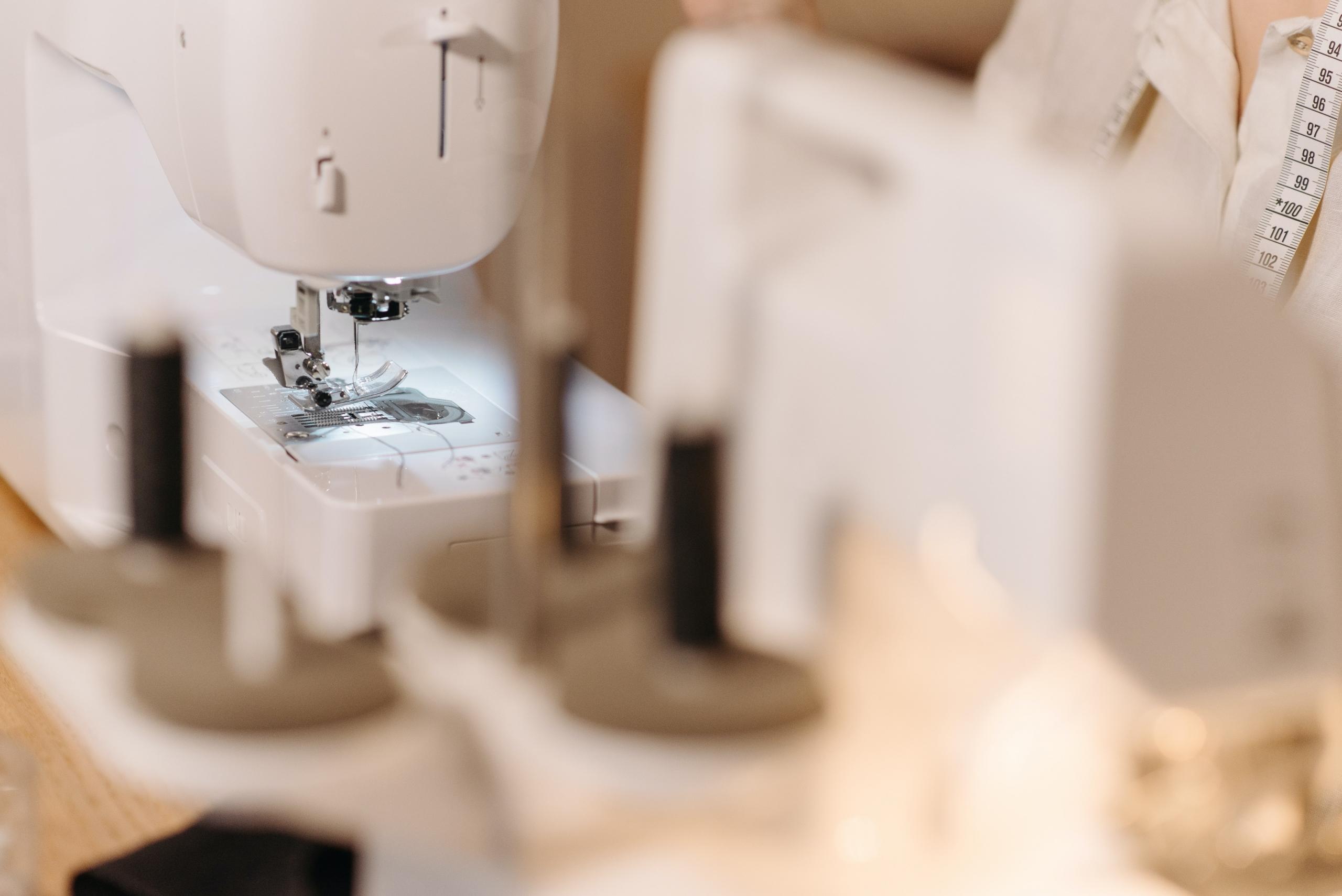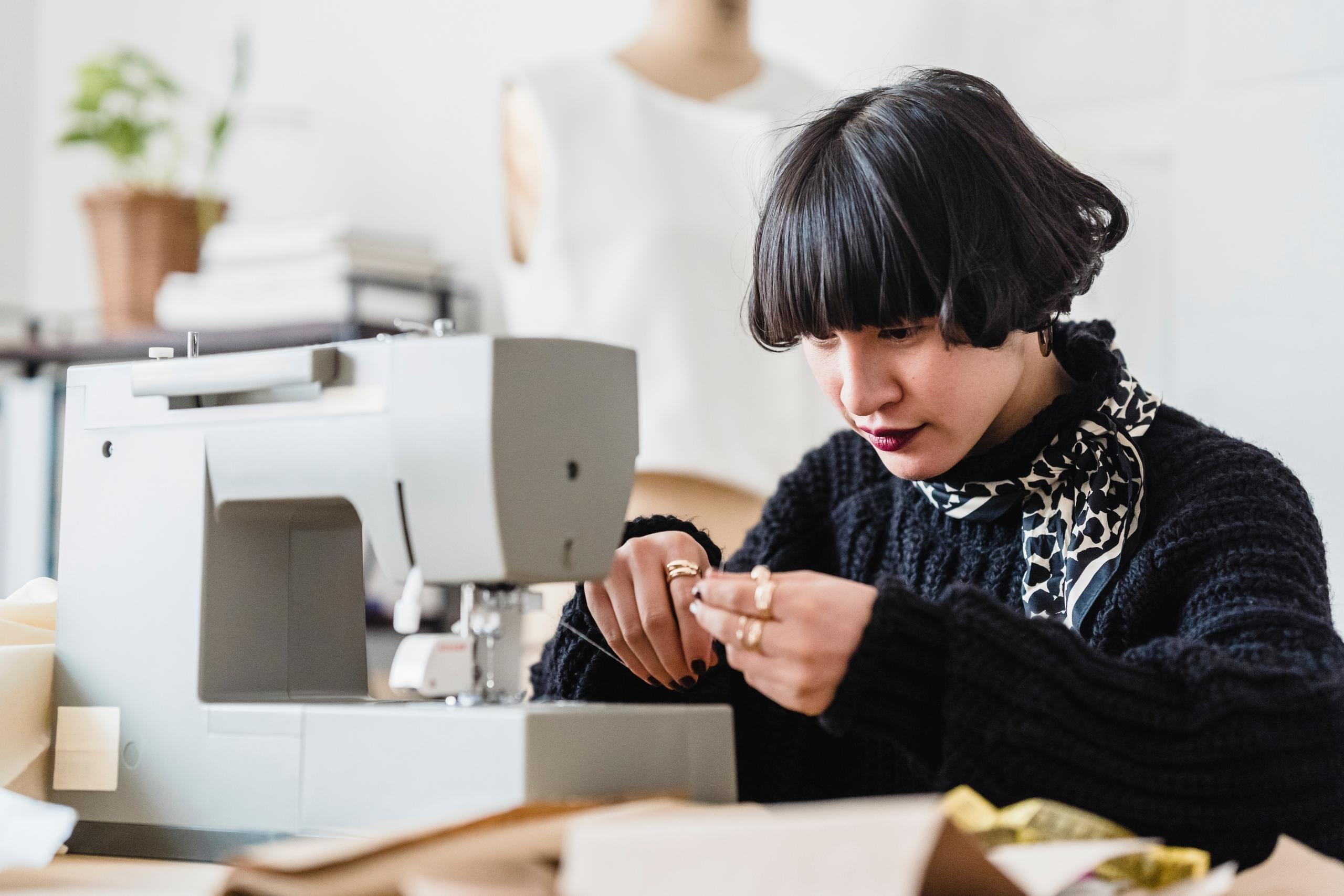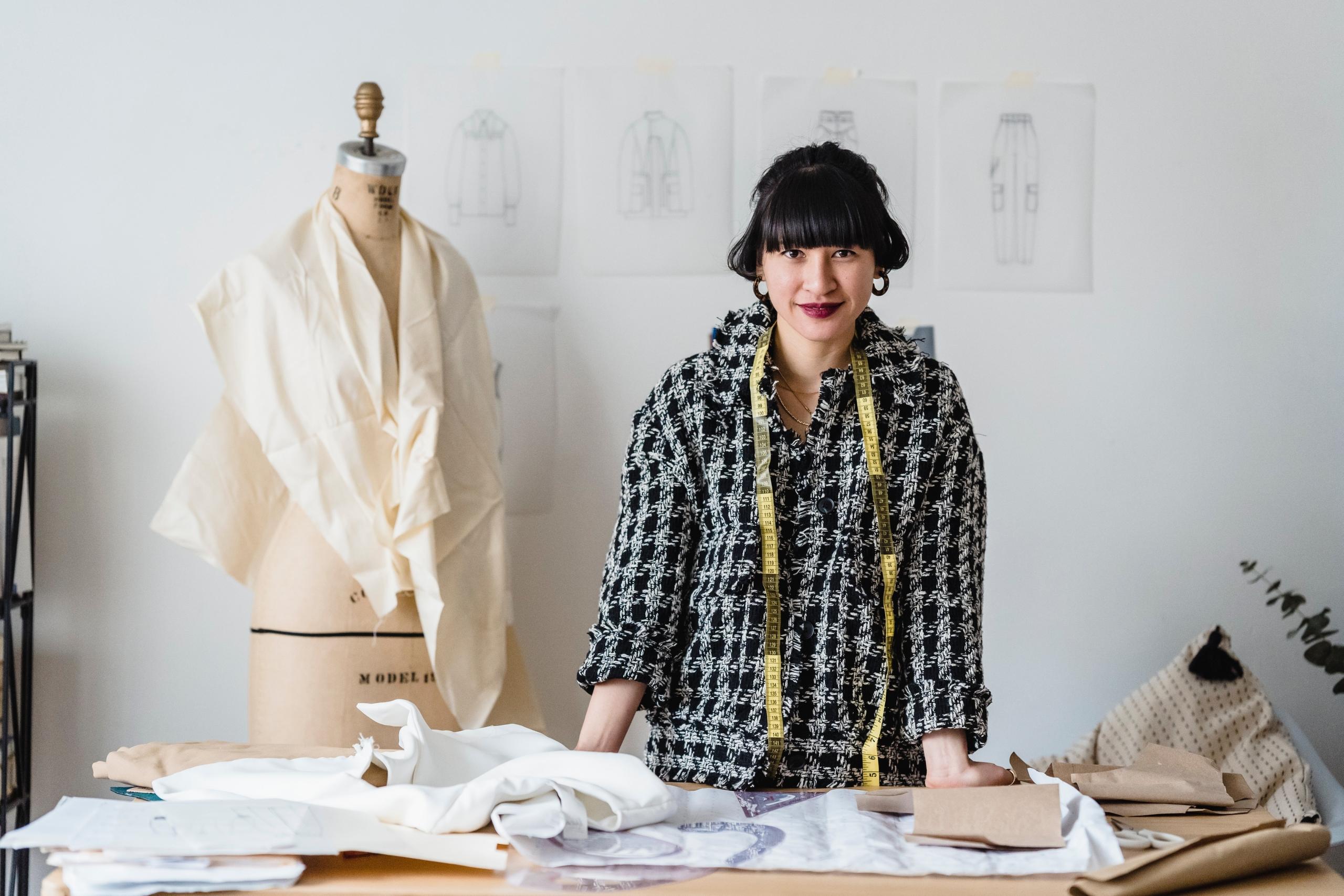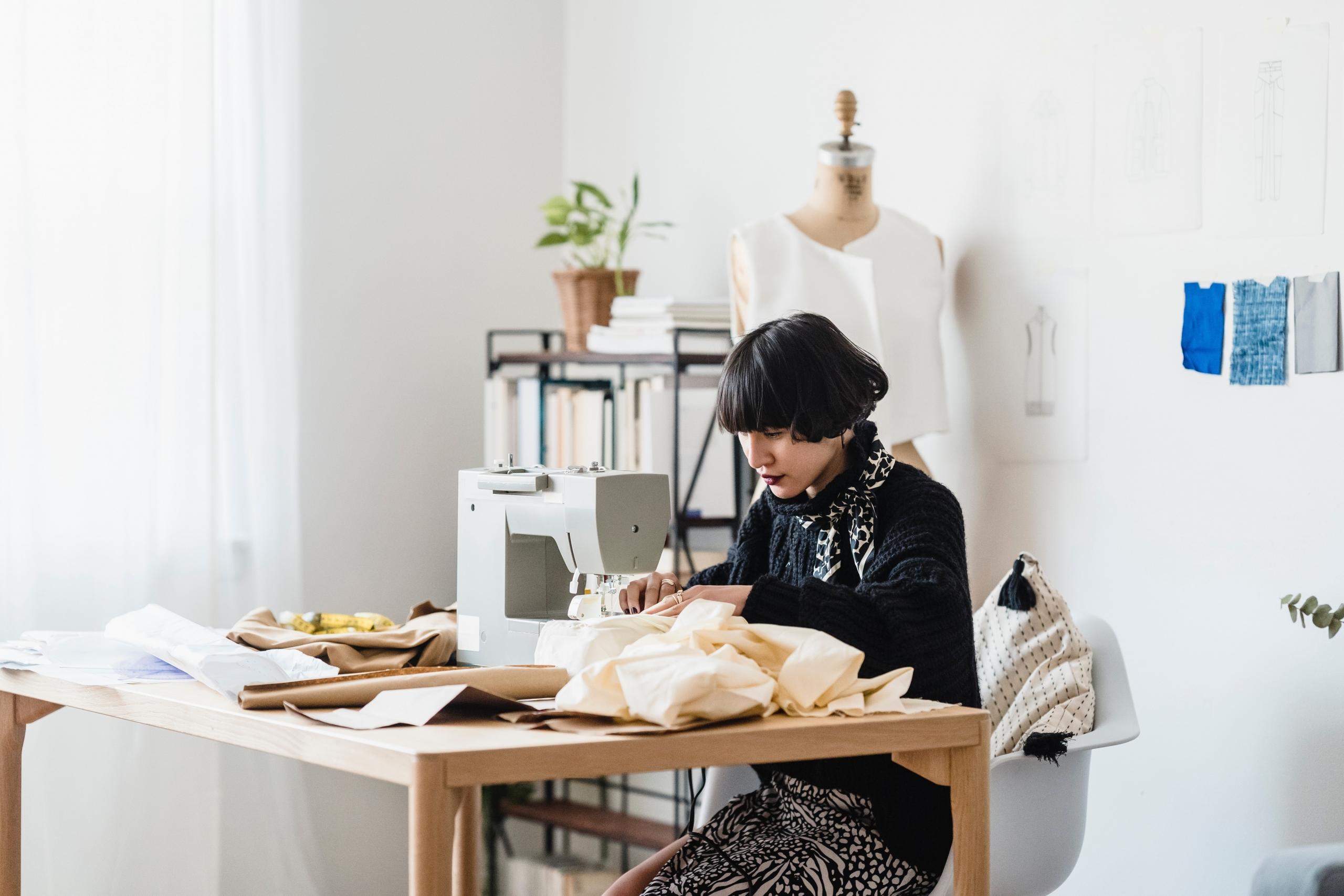What I make with my hands, I give with my heart. Proverb
Are you ready to put your heart and soul into your sewing classes?
It is all well and good if you are ready to start sewing. However, keep in mind that before you even get started with your sewing classes, you should feel confident about using your sewing machine.
If you have not bought your sewing machine yet, you need to invest in one. You do not need to start with a very complex machine with all the latest features and functionalities. In fact, it is best to consider investing in a manual sewing machine in order to learn all its features before advancing and getting an electronic machine.
Want to give private lessons?
Join the Superprof community and share your knowledge with inquiring and motivated students.
Learn to Sew with Sewing Machine Stitching Styles
A huge chunk of your sewing lessons entails learning how to use your sewing machine well. The duty of a qualified sewing instructor is to help you to get to grips with the various hand-stitching techniques. After getting to grips with hand sewing techniques, you need to perfect machine sewing techniques.
Beautiful things come together one stitch at a time. Anonymous
Some of the most basic sewing techniques that you can choose to learn are:
- The straight stitch: One of the commonly used stitching techniques is the straight stitch which is a strong type of stitch with threads on the bottom.
- The zigzag stitch: Many machines can create this type of stitch that looks as if it is a continuous row of the letter W.
- The stretch stitch: This stretch stitch is a stitching technique used for the stretch type material where every stitch is perfectly straight without any thread popping
- The elastic stitch: An elastic stitch is a stitch option for elastic fabrics such as stretch or jersey
- The piqué zigzag stitch: This type of stitch is a zigzag stitch which is very strong
You have already heard about these many different stitching techniques, however, there are a few rules that you ought to keep in mind before you even get to applying these stitching techniques.

You need to sit correctly when stitching in an upright position with your head straight and not above the sewing machine. Align your body in such a way that the center of your body is in line with the needle. If this sounds all too complicated for you, you can get assistance from a Superprof instructor who will assist you to learn the basics of sewing. You can rope in a Superprof tutor to get you started with sewing lessons for beginners before you even start attending sewing classes or even as an extra way to get practice while taking sewing classes at a sewing school or at university.
All About Sewing Machinist Training Courses
As a beginner sewer, you do need to attend training courses that will set you off on the right foot when it comes to sewing.
Sewing a button on a dress by hand is one thing but there are so many more machine tips and tricks that you will learn from a basic sewing machinist training course. So intense is the process of learning how to use a sewing machine that there are various YouTube tutorials on how to use the Bernina sewing machine to learn the basics of embroidery.
Elna — another machine brand — offers its sewing machine users the chance to attend courses to learn the ins and outs of using the Elna sewing machines.
Learning all about your sewing machine is a core step when it comes to learning how to become a fashion designer and if this is something that is on your bucket list, you better start considering taking up a sewing machinist training course.
The neologism "sewcialist" is the term that describes someone who loves nothing more than to be sewing.
By taking a sewing machine course, you can familiarise yourself with some commonly used sewing accessories that beginner "sewcialists" may need for their machine:
- A presser foot,
- A bobbin case,
- A zipper foot,
- A buttonhole foot,
- A small oilcan,
- Bobbins,
- Standard replacement needles,
- An invisible zipper foot.
Furthermore, starting a sewing course means learning important things such as how to wind and insert a sewing machine bobbin. In fact, you may still be struggling after reading your sewing machine manual as to how you can thread through the necessary guides and tension controls so that the thread is smoothly wound on the bobbin. Fact remains that it is inevitably smoothly wound bobbins that lead to properly formed stitches.
Learn How to Sew on a Sewing Machine

You may have learnt how to thread the bobbin and engage the bobbin winding, but this is not all there is to sewing. Learning how to sew on a sewing machine entails much more.
Instead of being intimidated by a sewing machine, consider learning how to use your sewing machine properly. Since bobbins are so cheap, you need to consider buying extra bobbins- this is a core tip for all beginner sewers.
While the bobbin influences the way that your stitches come out, you must remember that machine needles are equally as important. While a sewing machine needle is generally super thin, there are different parts of the machine needle that you need to keep in mind:
- Shank: This is the upper thick part of the sewing machine needle which is the part of the needle that is inserted into the machine
- Shaft: Is the area from the bottom of the shank to the point
- Groove: Is along the side of the needle leading to the eye and it serves as the place for the thread to lay into the needle
- Scarf: Refers to the groove out of one side of the needle
- Eye: The eye of the needle carries the thread
- Point: Is the point of the needle that makes initial contact with the fabric
There is a fair amount of theoretical knowledge that you need to consider when you decide to take sewing lessons. The size of sewing needles that you choose to use is important. When learning how to sew you must know how needles are sized in your respective country.
Remember:
To be creative is to let little pieces of your heart go & place them into each project you make. Pat Bravo
So go ahead and discover some sewing projects for beginner sewers.
Learning to Use a Sewing Machine
You may have considered taking up sewing classes to learn how to use your sewing machine to its fullest potential. You may even have decided to learn how to sew on your own. While we are of the opinion that nothing beats taking a sewing class where you can learn how to sew with the aid of a qualified instructor, we also understand that if you are motivated to learn how to sew on your own, you will manage to sew well without any additional help.

However, when you are attempting to learn how to use your sewing machine on your own, you ought to remember certain vital tips:
- Blogpost sewing machine operating instructions and internet tutorials alone cannot help you advance from someone who has never sewn before to someone who sews perfectly well.
- Watching a live demonstration is a great way to learn how to sew since sewing is not at all obvious to do.
- You may think you will learn how to sew quicker on your own as you are learning at your own pace but this may not be the case, you may endure much frustration along the way when guiding yourself.
- Learning how to sew alone may be difficult as you cannot rely on professional seamstresses to answer any sewing-related questions that you may have.
- Sewing on your own means that you will be left to your own devices and may not know when you have made a sewing mistake. It is harder to correct mistakes you don't actually know you are making.
While the idea of the abovementioned tips was not to deter you in any way from learning how to sew on your own, it was to allow you to understand that sometimes it is better to pick up a new skill such as sewing from someone more experienced. Perhaps relying on the sound advice of your parents or grandparents who know how to sew or reach out to one of our trusted Superprof tutors to get you started even if you are going to learn how to sew on your own. Superprof also offers sewing classes for beginners, where you can learn the most basic skills.
On the Superprof site, you have the choice of choosing a sewing instructor from a wide variety of instructors based throughout South Africa. All our tutors are willing to help you learn how to get stitching and sewing away.
You need to remember that this article focused on how important it is to choose your sewing machine according to its features, cost and accessories. The first starting point when taking sewing lessons is to understand how your sewing machine works. Knowing everything, from how to thread your machine, insert the bobbin, and change the needles, is vital when you choose to pursue the sewing journey. Finally, sometimes you can try to learn how to sew alone but it is always best to walk hand-in-hand with an instructor when you advance in your sewing journey. With Superprof you can choose between an online sewing course or a face-to-face course.
For further inspiration to start sewing, consider what has aptly been said about it:
Sewing fills my days and my living room, dining room, bedroom, and closets. Anonymous
Want to give private lessons?
Join the Superprof community and share your knowledge with inquiring and motivated students.





